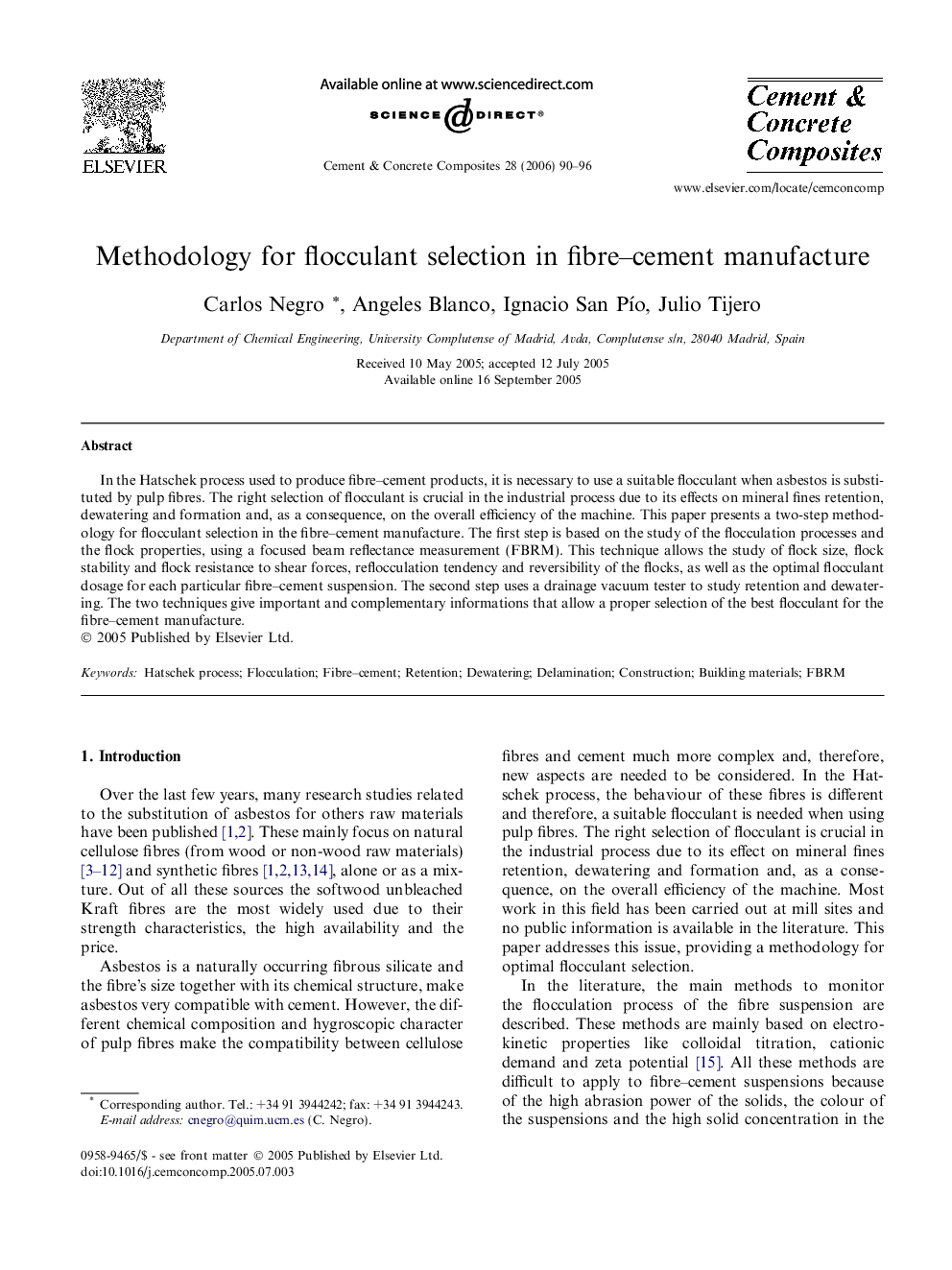| کد مقاله | کد نشریه | سال انتشار | مقاله انگلیسی | نسخه تمام متن |
|---|---|---|---|---|
| 1455908 | 989098 | 2006 | 7 صفحه PDF | دانلود رایگان |

In the Hatschek process used to produce fibre–cement products, it is necessary to use a suitable flocculant when asbestos is substituted by pulp fibres. The right selection of flocculant is crucial in the industrial process due to its effects on mineral fines retention, dewatering and formation and, as a consequence, on the overall efficiency of the machine. This paper presents a two-step methodology for flocculant selection in the fibre–cement manufacture. The first step is based on the study of the flocculation processes and the flock properties, using a focused beam reflectance measurement (FBRM). This technique allows the study of flock size, flock stability and flock resistance to shear forces, reflocculation tendency and reversibility of the flocks, as well as the optimal flocculant dosage for each particular fibre–cement suspension. The second step uses a drainage vacuum tester to study retention and dewatering. The two techniques give important and complementary informations that allow a proper selection of the best flocculant for the fibre–cement manufacture.
Journal: Cement and Concrete Composites - Volume 28, Issue 1, January 2006, Pages 90–96